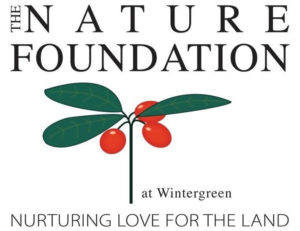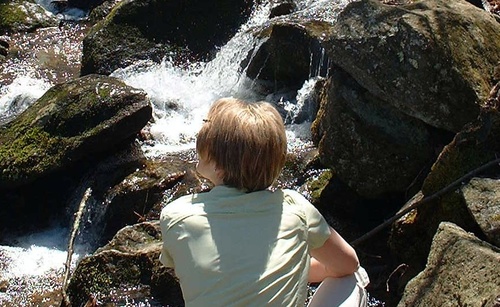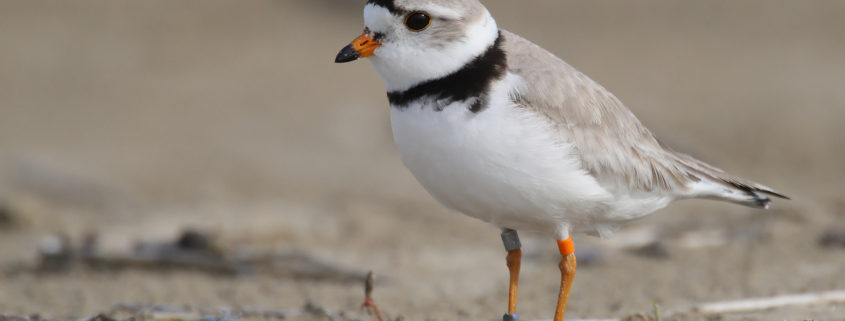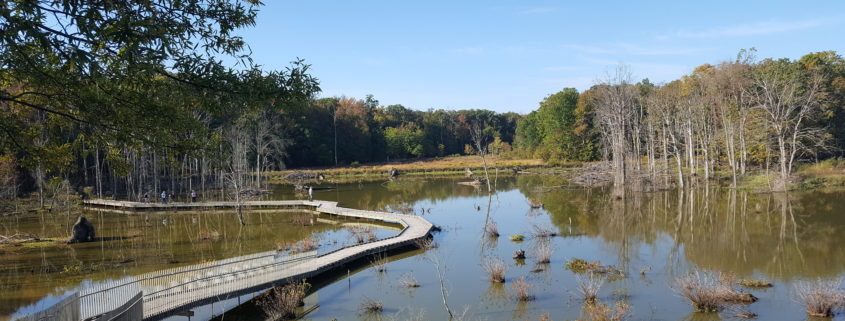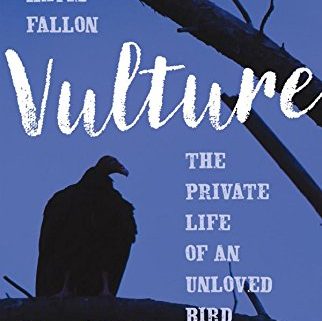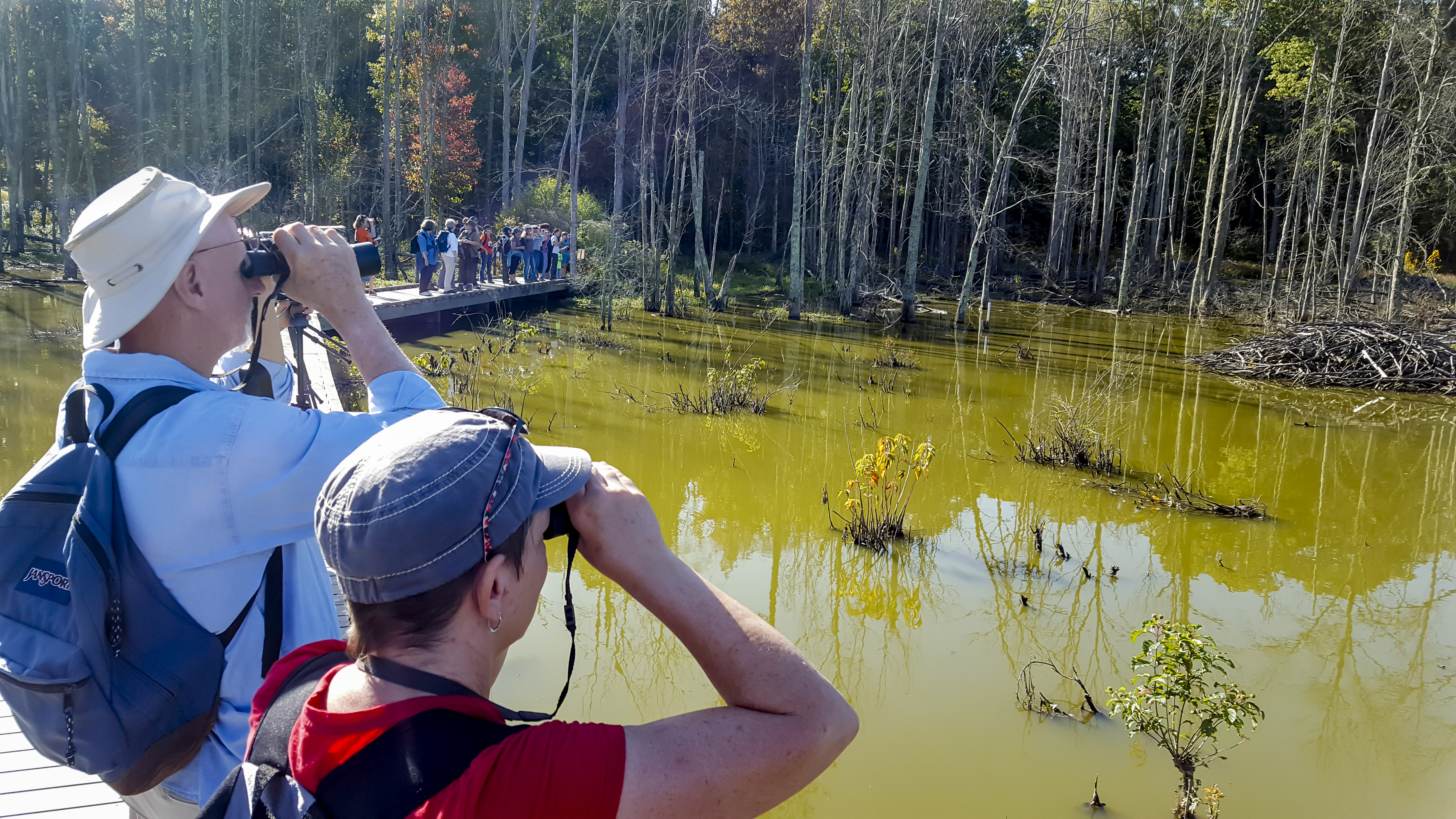
Birdwatching on the boardwalk at Huntley Meadows (Photo by Ana Ka’ahanui)
Huntley Meadows Park offered our gaggle of naturalists a perfect view of its 1,500 acres of wetlands, meadows, and forests for our second fall field trip, on 7 October. In the morning, Rentz Hilyer and Mary Benger directed our eyes skyward as we looked and listened for birds. Alonso Abugattas, Jr.’s afternoon herps walk kept us earthbound as we tried to spot the creatures that slither and swim. And wiggle. And sometimes just lollygag in the weeds.
Rentz, land steward specialist at the Northern Virginia Conservation Trust, and Mary, a graduate of the FMN program, helped us track the movements and calls of the more than 200 species of birds known to live in the park. As a group we observed 29 species of birds including Great Blue Herons, Hairy, Downy, Red-Bellied and Red-headed Woodpeckers, Great Egrets, Red-winged Blackbirds, Carolina Wrens and Chickadees, Northern Flickers, Mourning Doves, Wood Ducks, Canada Geese, Northern Rough-winged Swallows, Eastern Phoebes, Gray Catbirds, Yellow-rumped Warblers, Brown-headed Cowbirds, Belted Kingfishers, Blue Jays, American Robins and more. Rentz introduced us to the app eBird so that we can contribute to its ever-growing database as citizen scientists.

Gorgeous afternoon for discovering the park’s biodiversity. (Photo by Ana Ka’ahanui)
After lunch, we trekked back out into the park in search of herps with Alonso, the natural resources manager for the Arlington County Department of Parks and Recreation. With the recent drought, we weren’t sure how many critters we would find, but the beautiful day was good to us. We observed Eastern Ribbon and Eastern Garter Snakes; Snapping, Spotted, and Eastern Painted Turtles, as well as Southern Leopard, Pickerel and various other types of frogs. We learned that a group of frogs is called an army, and a group of toads is called a knot. Alonso has published a great resource called the The Reptiles and Amphibians of the Washington, DC Metropolitan Area and leads a Facebook group called Capital Naturalist, both of which are helpful to naturalists looking to identify the great diversity of life in Northern Virginia.
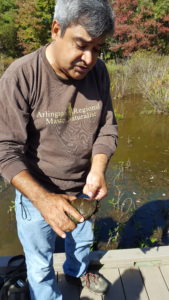
Alonso gives us a closer look at a painted turtle. (Photo by Ana Ka’ahanui)
In addition to animals, we observed all manner of plant species, such as Lizard’s Tail, Swamp Rose Mallow (a type of hibiscus), Winterberry, Arrowwood Vibernum and Wood Asters, to name a few. We learned that Jewelweed is a natural preventative and treatment for poison ivy and poison oak and that Turtlehead Flowers are a favorite treat of grazing deer.
Insects were plentiful, too, and some were vocal, such as the Handsome Meadow Katydid. The Long-jawed Orb Weaver spiders spun impressive webs at angles to best catch their prey. Common Whitetail Dragonflies and electric blue and red Damselflies whizzed over the wetlands as we wandered over the trails and boardwalk.
While we saw some evidence of the local beavers—lots of chew marks and piles of wood—they proved elusive that day. We did, however, see a lone muskrat cruising around in the marshes. The day was filled with nature discoveries galore and was a perfect learning lab for our Master Naturalist class.
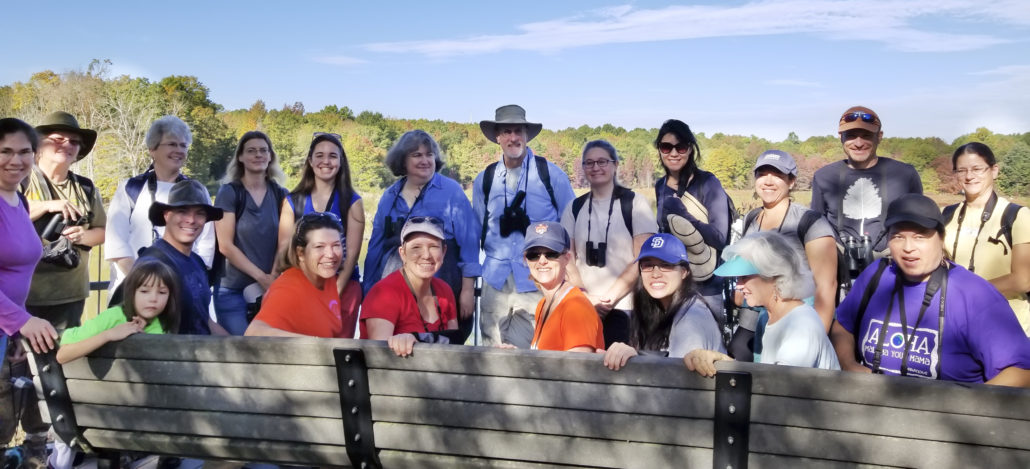
Class photo on the observation deck
Click here to view photos from our outing.
